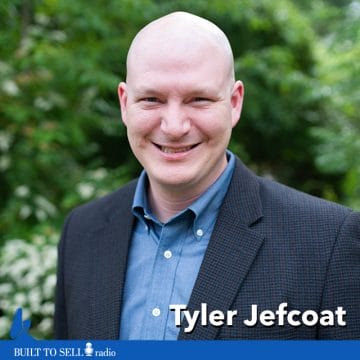About this episode
Tyler Jefcoat co-founded Care to Continue, which provides in-home care for seniors, in 2012. Jefcoat built the company to more than 100 employees when he got an offer from a private equity group for more than five times EBITDA. Jefcoat was thrilled. The only problem? His partner wasn’t ready to sell, which kicked off an acrimonious battle ending with Jefcoat selling his shares back to his partner.
Jefcoat tells his story with humility and passion and drops a collection of knowledge bombs, including:
- How to switch from a negative to positive cash flow model.
- How to leverage the simplifier subscription model.
- Why you should discuss debt before you enter into an operating agreement with a partner.
- Why your “training wheels business” may be a prerequisite for a more significant exit down the road.
- How to structure the buyout of a partner.
Jefcoat’s original offer was from a private equity group, one of three types of acquirers John Warrillow discusses in his new book The Art of Selling Your Business: Winning Strategies And Secret Hacks Exiting On Top. Pre-order your copy and receive a collection of thank you gifts.
Check out our article on Build Your Company Like Warren Buffett, Without Being Cheap.

About Our Guest
Tyler Jefcoat is the Founder & CEO of Seller Accountant where he exercises his passion for helping sellers maximize their businesses. Tyler provides financial coaching for sellers totaling more than $100 million per year in e-commerce sales. Tyler also leads the Sellers Roundtable, an exclusive mastermind group for seven- and eight-figure sellers. Before founding Seller Accountant, Tyler was the Co-Founder and Managing Partner for Care to Continue, a home health care company that grew from zero to 100 employees in four years.
Twitter – @SellerAccountan
Facebook – https://www.facebook.com/SellerAccountant
YouTube – https://www.youtube.com/channel/UCfIH3Puf4jXhT1F1EcTIVBg


